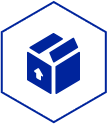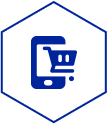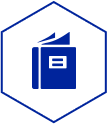Like many industrial sectors, the paper industry is very competitive, continuously looking for innovative solutions and process efficiency improvements. The increase in energy costs has dramatically impacted the profitability of production sites, particularly in Europe. Operators are chasing cost savings to navigate this volatile and uncertain economic environment.
In a paper mill, the lubrication central system is vital as it is directly connected to the calendars in the press and dryer sections. This equipment is susceptible to particulate contaminants, generating wear mechanisms, typically fatigue wear for journal bearings or hydrostatics bearings.
When the contamination of the lubrication oil gets out of control, mechanical failures quickly occur on rotating parts and components. Installing fine filtration on the lubrication system avoids such catastrophic scenarios.
-
Challenge
-
Solution
-
Benefits
A major paper mill in Europe wanted to reduce its running costs to remain competitive against other production sites, much less impacted by the energy cost increase (the site was mainly outside Europe). Its production and maintenance engineers initiated a drastic cost reduction program for consumables and equipment, covering raw materials, chemical products, and other utilities, including filtration costs. The goal was to reduce its consumable budget by at least 20%, especially on the lubrication system where the high-flow filters were installed.
The plant asked Pall to help meet this objective by reviewing filtration sites already installed during our long commercial and technical relationship. In addition, offering a lower-performance solution would not achieve this 20% consumable budget reduction.
We proposed that the plant upgrade their current Pall Coralon® filter solutions with Pall Supralon filter elements and the new Lube and Hydraulic filtration platform, replacing both Ultipor® III and Coralon filter element designs. With no adaption of existing equipment necessary, the plant agreed on a trial to demonstrate a direct comparison between Coralon and Supralon filtration efficiency and service life.
The results achieved in actual operating conditions exceeded expectations as the service life of the filter elements increased by 30%. At the same time, the fluid cleanliness was 2 ISO code cleaner compared to the previous solution.
| Configuration | Average ISO Code | Service Life |
|---|---|---|
| Coralon | 17/15/12 | 6 weeks |
| Supralon | 17/13/10 | 8.5 weeks |
By utilizing Pall Surpalon filter technology, the paper mill achieved a 40% reduction in spending on lubrication system filtration. This was accomplished through a straightforward replacement process that required no additional maintenance work. Furthermore, the online measurement of fluid cleanliness levels improved, confirming that the lubrication system was effectively maintained. A fluid cleanliness level of 17/13/10 per ISO4406 was achieved throughout the full-service life of the filter elements, controlling the chain reaction of wear on the critical lubrication system.
Cleanliness Code Ratings
| Media Grade Code | Rating (μm ßx(c)>2000 based on ISO 16889 | CST* ISO Code Rating based on SAE ARP 4205 |
|---|---|---|
| Z | 3 | 06/04/<1 |
| P | 5 | 12/08/<1 |
| N | 7 | 14/09/04 |
| S | 12 | 18/16/08 |
| T | 25 | 19/17/12 |
*CST: Cyclic Stabilization Test to determine filter rating under stress conditions, based on SAE ARP4205.
Note these ISO codes are laboratory measurements under standard conditions. Cleanliness measured in actual operation will depend on operating conditions and sampling method.
Discover more about Supralon filter technology here.
Learn more about the solution that can support your applications or contact an expert today.
Contact us to see how Supralon can help you.




